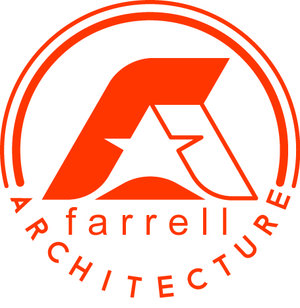Losing the Master
In case you haven't noticed, San Francisco is deep into the boom phase of her endearingly predictable boom/bust cycle. For the profession of architecture, the fecundity of this current boom cycle has brought a new crop of young architects as well. However, this group is different, and better than we have seen in a long time.
Just like dogs seem to age 7 years for every one of ours, the professional architect goes through a series of developmental phases that are asynchronous with other professions. Your twenties are spent finishing a university degree and entering the workforce as an intern. After an average of 5 years, you can pass the licensing exams and legally practice, but few architects venture out on their own at this point. It’s actually the next 10 years that are the critical decade where the real development takes place.
For thousands of years, learning the practice of architecture has been based on the master-apprentice relationship, and for thousands of years that process worked. Then suddenly in the mid 1990s something changed. Computer Aided Drafting broke this relationship. When a master sits down with an apprentice and sketches ideas on paper, there is no skill divide. Drafting with a pencil does take considerable skill, but the technology barrier is non-existent. The work to document ideas is shared, and the process of design and learning govern the relationship. Many people, of varying skill sets would work side by side on the same sheets of vellum, coordinating, correcting and sharing tid bits of knowledge gained by the master over decades of experience.
From the introduction of Computer Aided Drafting, it was only large architecture firms doing large projects that could offset the cost of the hardware and software. An Intergraph station in 1985 cost somewhere around $70k per seat. These were ridiculously complicated machines running a bewildering software interface and were almost never operated by someone with an architecture degree. In 1994 I was able to graduate from an accredited architecture program without a single credit of classroom time learning CAD. However….the only question I was asked on job interviews was "Do you know CAD?". At the time, there was panic among architecture firms to modernize and adopt CAD. The people making these decisions were themselves CAD illiterate, but could plug that hole by only hiring CAD operators. The work flow divided and project teams split between those who produce and those who manage. The masters retreated from the process of production, and the CAD jockeys plodded along in dimly lit rooms. Where previously there was the sound of conversation, as wisdom passed between the generations, now there was only humming from suitcase sized monitors on desks previously reserved for two stools and a Mayline.
If you do the math, you understand that those apprentices from the dawn of CAD are now in their mid-40s and setting up their own studios. It’s an age bracket that defines the architect. When bankers are planning their retirement in the next decade, architects are just hitting their pace. Today, they are leaving the master and hiring their own apprentices with whom they share equal skill sets. Though they haven't sat on the second drafting stool in a long time, they have perfected real time sharing of robust project databases, and that is the real benefit that comes with this new batch of architects: the collaborative design process itself is back.
Modern production software in the architecture industry is amazing. It's fast, efficient, accurate and can effectively produce photorealistic images from creative thoughts....all of which means nothing if you don't have something good to show. Where the computer screen was once divisive and isolating, it is now a window into the mind of a good architect.
For years we have been transitioning from the cumbersome world of layer-based 2D CAD drafting to information dense 3D BIM models. The change has dramatically decreased the amount of time it takes to produce construction documents and leaves that time to envision and design. Design teams are a contiguous whole again, evidenced by the return of chatter in the studio about “architecture” and not about some obscure command in AutoCAD.
We still go through rolls of trace, don’t get me wrong. I like to sketch and I spend a lot of time with clients sketching their thoughts into real ideas. Without this skill it would be hard to call yourself an architect.
Farrell Architecture is looking for the 2019 batch of summer interns. Shoot an email to ben@f-a.us
